Trevor Seets
Video Denoising in Fluorescence Guided Surgery
Nov 14, 2024
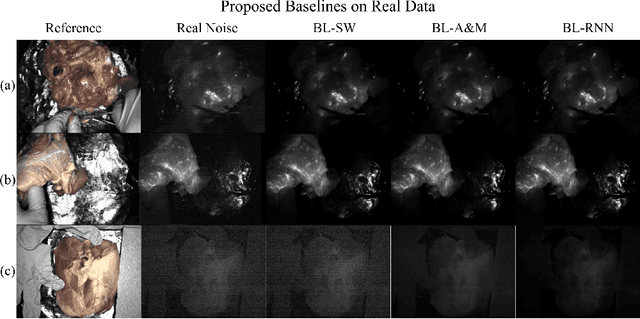
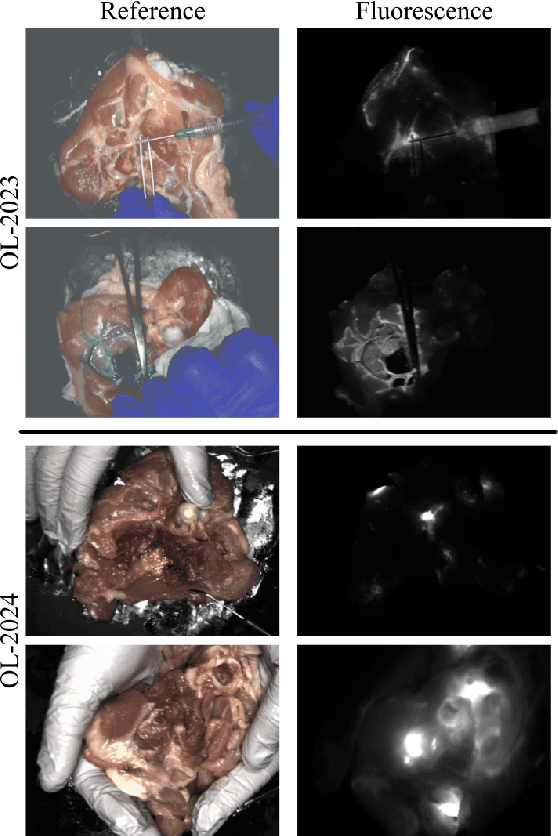
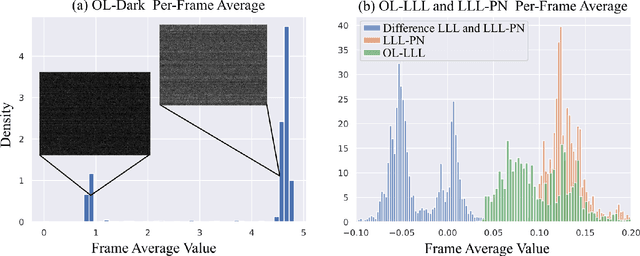
Abstract:Fluorescence guided surgery (FGS) is a promising surgical technique that gives surgeons a unique view of tissue that is used to guide their practice by delineating tissue types and diseased areas. As new fluorescent contrast agents are developed that have low fluorescent photon yields, it becomes increasingly important to develop computational models to allow FGS systems to maintain good video quality in real time environments. To further complicate this task, FGS has a difficult bias noise term from laser leakage light (LLL) that represents unfiltered excitation light that can be on the order of the fluorescent signal. Most conventional video denoising methods focus on zero mean noise, and non-causal processing, both of which are violated in FGS. Luckily in FGS, often a co-located reference video is also captured which we use to simulate the LLL and assist in the denoising processes. In this work, we propose an accurate noise simulation pipeline that includes LLL and propose three baseline deep learning based algorithms for FGS video denoising.
Sparsity aware coding for single photon sensitive vision using Selective Sensing
Aug 09, 2023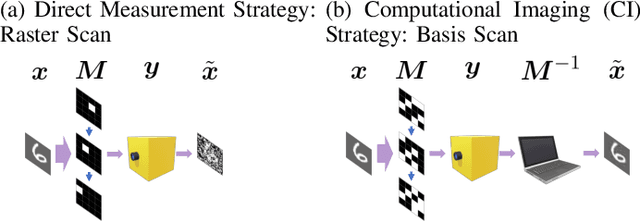
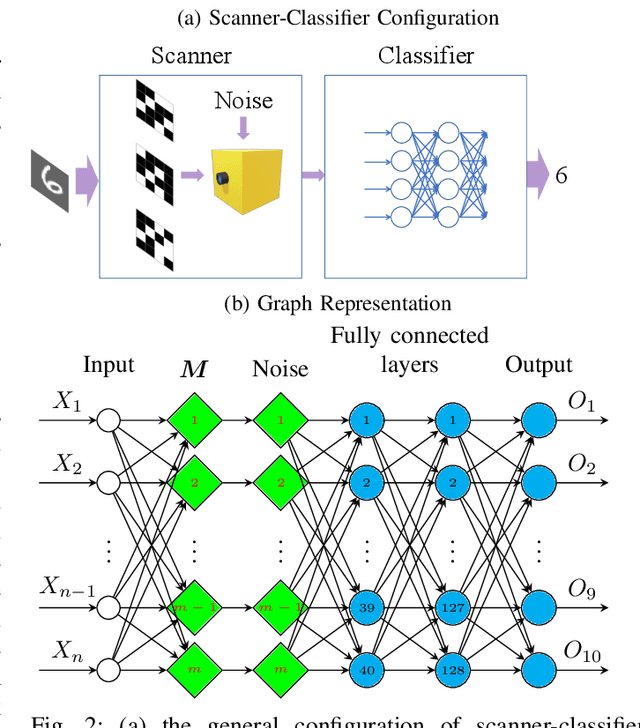
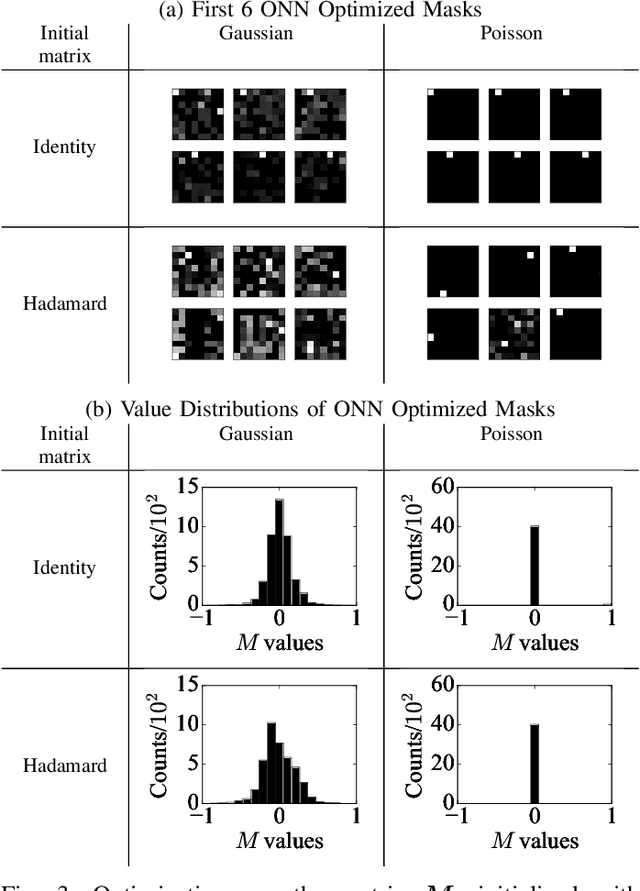
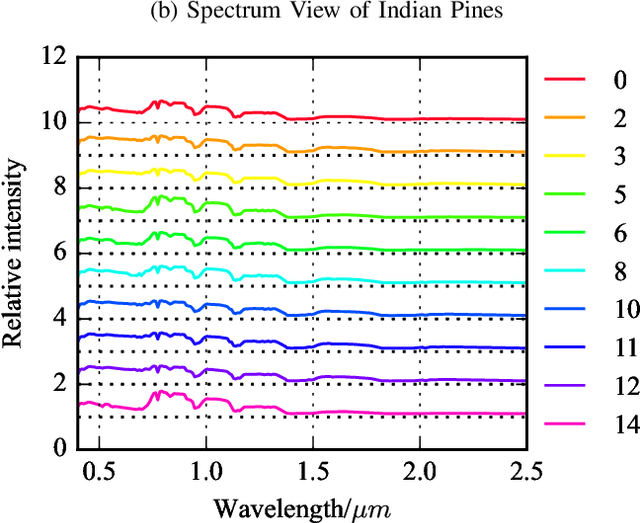
Abstract:Optical coding has been widely adopted to improve the imaging techniques. Traditional coding strategies developed under additive Gaussian noise fail to perform optimally in the presence of Poisson noise. It has been observed in previous studies that coding performance varies significantly between these two noise models. In this work, we introduce a novel approach called selective sensing, which leverages training data to learn priors and optimizes the coding strategies for downstream classification tasks. By adapting to the specific characteristics of photon-counting sensors, the proposed method aims to improve coding performance under Poisson noise and enhance overall classification accuracy. Experimental and simulated results demonstrate the effectiveness of selective sensing in comparison to traditional coding strategies, highlighting its potential for practical applications in photon counting scenarios where Poisson noise are prevalent.
Passive Inter-Photon Imaging
Apr 11, 2021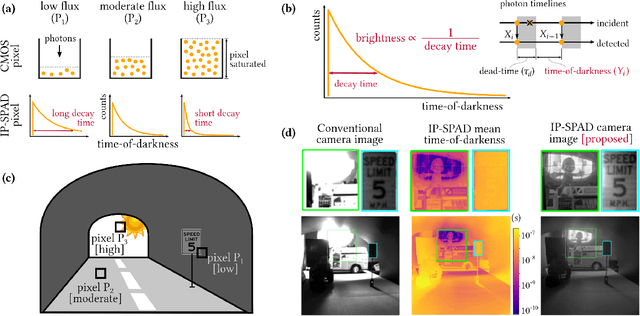

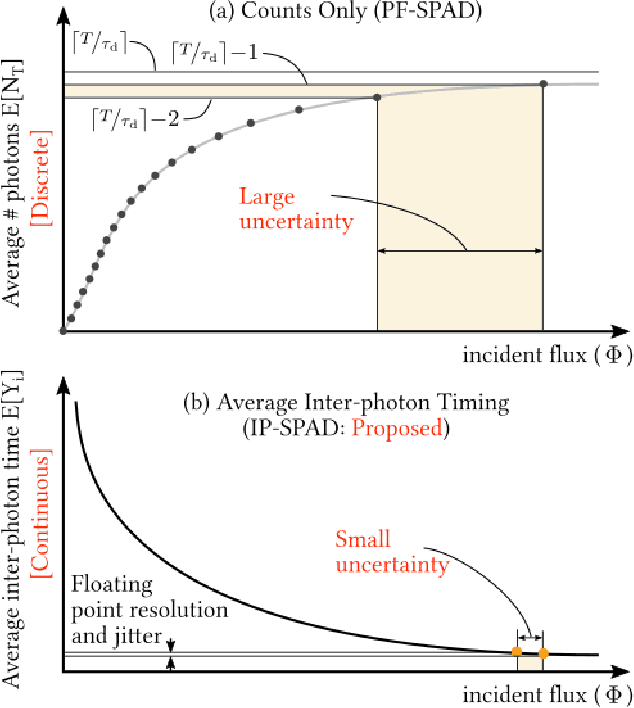
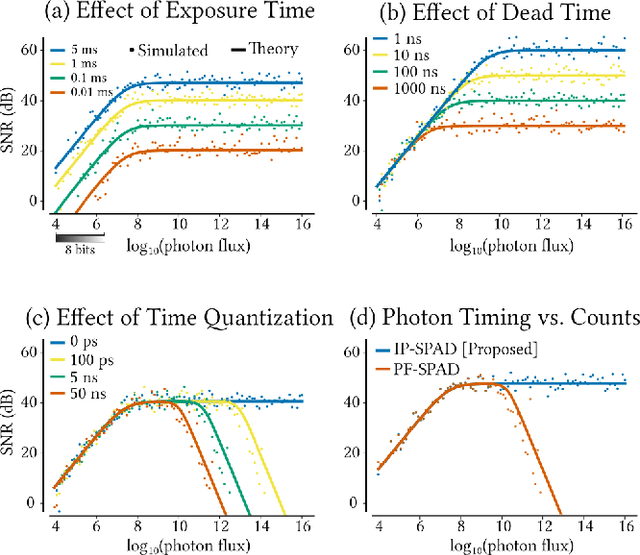
Abstract:Digital camera pixels measure image intensities by converting incident light energy into an analog electrical current, and then digitizing it into a fixed-width binary representation. This direct measurement method, while conceptually simple, suffers from limited dynamic range and poor performance under extreme illumination -- electronic noise dominates under low illumination, and pixel full-well capacity results in saturation under bright illumination. We propose a novel intensity cue based on measuring inter-photon timing, defined as the time delay between detection of successive photons. Based on the statistics of inter-photon times measured by a time-resolved single-photon sensor, we develop theory and algorithms for a scene brightness estimator which works over extreme dynamic range; we experimentally demonstrate imaging scenes with a dynamic range of over ten million to one. The proposed techniques, aided by the emergence of single-photon sensors such as single-photon avalanche diodes (SPADs) with picosecond timing resolution, will have implications for a wide range of imaging applications: robotics, consumer photography, astronomy, microscopy and biomedical imaging.
 Add to Chrome
Add to Chrome Add to Firefox
Add to Firefox Add to Edge
Add to Edge